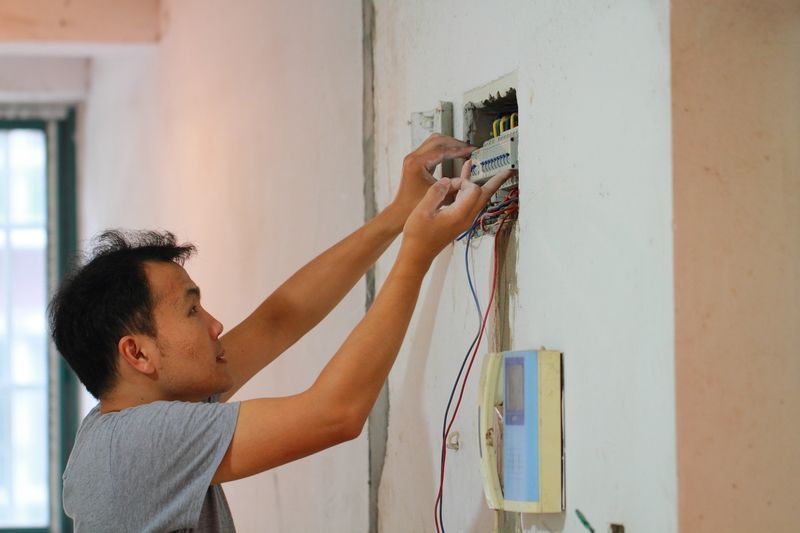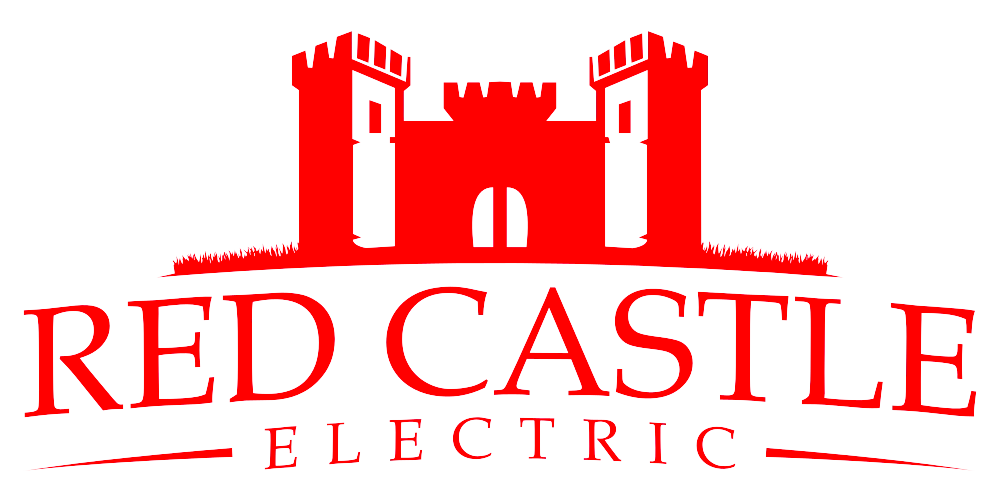Electrical Safety and Smart Homes: Essential Maintenance Tips
In today's modern world, where technology is becoming increasingly integrated into our homes, ensuring electrical safety is paramount. From smart appliances to automated systems, our homes are evolving, but so should our understanding of electrical maintenance. With that in mind, let's explore some essential tips to keep your home safe and secure from electrical hazards.
Understanding Electrical Hazards in the Home
Every homeowner needs to be aware of the potential electric hazards within their home to ensure the safety of their family and property. Identifying and mitigating these risks can significantly decrease the likelihood of incidents like electrical fires, shocks, and outages.
Identifying Common Electrical Hazards
Common electrical hazards include overloaded power outlets, improperly used extension cords, and the use of outdated or damaged electrical appliances. Other risks involve DIY electrical work without proper knowledge or safety measures and neglecting to replace or repair damaged electrical wiring. Being mindful of these hazards is the first step toward maintaining a safe home environment.
The Role of Outdated Wiring in Electrical Safety
Outdated wiring systems are a considerable risk factor for electrical hazards. Older homes, particularly those not updated to meet current electrical standards, may not be equipped to handle the electrical load of modern appliances and devices, leading to overheated circuits and potential fires. Warning signs include frequent tripping of circuit breakers, flickering lights, and a burning smell from outlets or switches, indicating that it's time to call a professional to inspect your home's electrical system.
Statistics on Electrical Fires and Accidents in Homes
According to data from the U.S. Fire Administration, there are an estimated 24,000 home electrical fires each year in the United States, resulting in numerous injuries, deaths, and property damage. Similarly, the Electrical Safety Foundation International (ESFI) highlights that electrical distribution systems are the third leading cause of home structure fires. These statistics underscore the critical importance of electrical safety and the need for regular inspections and maintenance.
Understanding and mitigating the hazards related to electricity in the home are crucial for securing the safety of its occupants. Homeowners should be vigilant about the common risks, and the dangers of outdated wiring, and heed the sobering statistics concerning electrical fires and accidents. Taking proactive steps, including scheduling regular professional inspections, can help in preventing such unfortunate events and ensuring a safer living environment.
The Proper Use of Extension Cords and Power Strips
Extension cords and power strips are common in most households, offering convenience and extending the reach of electrical outlets. Their proper use is pivotal to preventing potential hazards.
Choosing the Right Extension Cord for the Job
It’s essential to select extension cords that are suitable for the intended use. For outdoor activities, choose cords labeled for outdoor use, which are designed to withstand weather conditions. Ensure that the cord’s wattage rating matches or exceeds the total wattage of the connected devices. This precaution prevents overheating and potential fire risks.
The Dangers of Daisy-Chaining Power Strips
Daisy-chaining, or plugging one power strip into another, significantly increases the risk of overloading circuits and causing electrical fires. Instead, use a single, surge-protected power strip for multiple devices, and ensure it's directly connected to a wall outlet.
Tips for Safe Extension Cord Storage and Care
To extend their lifespan and ensure safety, unplug extension cords when not in use, avoid running them under carpets or over sharp edges, and store them loosely coiled in a dry location. Inspecting cords regularly for damage and promptly replacing frayed or worn ones can prevent accidents.
Preventing Outlet Overload and Its Importance
Understanding How Outlet Overload Occurs
Outlet overload happens when too many devices draw power from a single outlet, exceeding its capacity and potentially leading to overheating and fires. High-wattage appliances are often culprits of overloads.
Recognizing the Signs of an Overloaded Circuit
Signs include flickering lights, buzzing sounds from outlets, discolored outlet covers, and frequently tripped circuit breakers. These indicate the urgent need to redistribute the electrical load.
Practical Steps to Prevent Overloading Outlets
Limit the use of multi-outlet converters, and don’t exceed the maximum amperage of the outlet. Allocating high-energy devices to separate circuits can prevent overloading.
Recognizing the Need for Professional Electrical Assistance
Signs Your Home May Need an Electrical System Upgrade
Indicators such as constant flickering lights, using multiple extension cords as permanent fixtures and outdated two-prong outlets suggest it might be time for an upgrade. Modern homes require more power, and an updated system ensures safety and efficiency.
When to Call a Licensed Electrician for Repairs
Any persistent electrical issues, installation of new lighting or appliances, and updating your home’s electrical panel should prompt a call to a professional. Attempting DIY repairs can be dangerous if you're not trained and equipped properly.
The Risks of DIY Electrical Repairs
While DIY home projects can be rewarding, electrical work carries significant risks without proper training, including electric shock, fires, and even legal repercussions in some regions for unpermitted work. Enlisting the help of certified electricians ensures safety and compliance with local codes.
Understanding these aspects of electrical safety is critical for homeowners to enjoy a safe, efficient, and comfortable living environment. By following these guidelines, potential hazards can be significantly reduced, safeguarding your home and loved ones.
Importance of Regular Electrical Maintenance Checks
Ensuring the electrical safety of your home is not a one-time task but a continuous responsibility. Regular electrical maintenance checks are vital for the early detection of potential issues, long before they morph into serious problems.
What Entails a Home Electrical Safety Inspection
A comprehensive electrical safety inspection includes checking all electrical systems, appliances, and components in your home. Licensed electricians look for outdated wiring, malfunctioning circuit breakers, and safety hazards like exposed wires, and ensure that your home complies with current electrical codes. This proactive measure plays a critical role in preventing electrical fires and ensuring the safety of your family.
How Often Should Electrical Maintenance Checks Be Conducted
It's generally recommended to have a thorough inspection every 3-5 years. This frequency might vary depending on the age of your home, the presence of high-end electronics, and any recent renovations. Older homes or homes where significant changes to the electrical load occur (like adding new appliances) may require more frequent checks.
The Benefits of Preventive Maintenance on Your Home's Electrical System
Regular maintenance extends the lifespan of your home's electrical system, improves energy efficiency, and significantly reduces the risk of electrical fires. It ensures that your system can handle the demands of modern appliances, providing peace of mind knowing your family and property are safe.
Smart Home Devices and Electrical Safety
The adoption of smart home technology has skyrocketed, offering unparalleled convenience and control over home environments. Integrating these devices requires careful consideration of electrical safety.
Ensuring Your Electrical System Can Support Smart Devices
Before installing smart devices, ensure your electrical system can handle the additional load. Older systems may require upgrades or modifications to safely accommodate smart appliances and gadgets without overloading circuits.
Safe Practices for Integrating Smart Home Devices
When incorporating smart technology, choose products that comply with established safety standards and are compatible with your home’s electrical system. It’s also wise to have a professional electrician review your system’s capacity and make any necessary adjustments. This step is crucial for preventing overloads and ensuring that your smart home operates safely and efficiently. Incorporating regular electrical maintenance checks and safely integrating smart home devices are essential steps toward ensuring electrical safety in the modern home. By staying vigilant and enlisting professional help when needed, homeowners can enjoy the benefits of advanced technology without compromising on safety. Prioritizing electrical safety through these measures not only protects your home and loved ones but also contributes to a more secure and comfortable living environment.
Ensure your home's electrical safety and efficiency with our professional electrical inspection and upgrade services. Contact Red Castle Electric and schedule your inspection todayand enjoy peace of mind knowing your home is safe.
Related Posts



Need Help?
CALL US: (801) 850-8005
CONTACT INFO
(801) 850-8005
OFFICE HOURS
- Mon - Fri
- -
- Sat - Sun
- Closed
© 2024 Red Castle Electric . All Rights Reserved.

